Tramway Museum Society of Victoria Incorporated
38 Piccadilly Crescent, Keysborough, VIC 3173
Tramway Heritage Centre
330 Union Lane, Bylands, VIC 3762
Content copyright © Tramway Museum Society of Victoria Inc. Reproduced with permission.
ABN 12 739 015 600 Victorian Registration A1864E









The Melbourne and Metropolitan Tramways Board was a statutory authority that was responsible for the tram network in Melbourne, between 1919 and 1983. It was formed by the merger of the Melbourne Tramways Board along with a number of smaller tramway trusts and companies from throughout the city.
The M&MTB's main maintenance facility was the Preston Workshops, with depots at Brunswick, Camberwell, Coburg, East Preston, Essendon, Footscray, Glenhuntly, Hawthorn, Kew, Malvern, North Fitzroy, South Melbourne (Hanna Street), and Thornbury.
The W Series trams are the most iconic trams of Melbourne. Originally designed to be the standard tram of the M&MTB network. The first W Class tram was constructed in 1923, with 5 other classes constructed including many with additions and variations added, making a total of 13 varieties in the series. The Tramway Heritage Centre is the only museum in the world to have an example of each and every type of W Series tram. All W Series trams were constructed at the Preston Workshops.
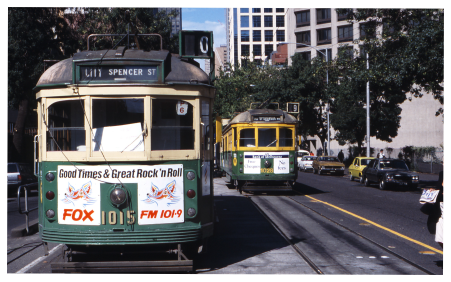
|
|
L Class 101 Bogie drop- In Service: 1921 (PMTT) Withdrawn: 1980 (1969 from regular service) Preserved: 1982 THC Bylands |
|
This tramcar was ordered by the PMTT from James Moore, but delivered in 1921 to the M&MTB. It was only the second type of four motor drop centre used in Melbourne (the first being the VR drop centre cars, No. 34 is the TMSV's example). The drop centre was rebuilt from a four door format into the standard W2 three door form. This class of tramcars was the widest ever used in Melbourne, and were used as the basis for the W class design. Photo: Alf Twentyman (TMSV Archives) |
|
|
X2 Class 680 Single truck saloon car In Service: 1930 Withdrawn: 1963 (Originally to Mr Waverley then sold to the TMSV) Preserved: THC Bylands |
|
This car and the other five members of it's "X2" class were, like the "X1" cars were also built as Safety Cars for one- |
|
|
Y1 Class 612 Bogie Peter Witt saloon car In Service: 1930 Withdrawn: 1990 (1965 from regular service) Preserved: 2005 THC Bylands (On loan from the State Government) |
|
This tramcar is one of four of its class built by the M&MTB at Preston Workshops. It is a double- Photo: Weston Langford |
|
|
PCC Class 980 2 door, bogie saloon car In Service: 1950 Withdrawn: 1971 Preserved: 1982 THC Bylands |
|
In 1938 the M&MTB obtained the Australian licence to import PCC patented technology and proposed to import a PCC tramcar for evaluation in Melbourne. In 1949 PCC trucks and control equipment was imported, instead of a complete PCC. A modified SW6 body was built for this equipment in 1950. It was to be the prototype for tramcars built for the conversion of Bourke Street bus routes to electric tram routes, but this did not eventuate due to financial constraints. It was withdrawn from service in May 1971, later having equipment removed for the Z class prototype. Photo: Alf Twentyman (TMSV Archives) |
|
|
W1 Class 427 Bogie drop- In Service: 1927 Converted to W2 Class: 1937 Preserved: 1985 THC Bylands |
|
This tramcar was constructed by the M&MTB. The W1 was open in the drop centre with two longitudinal flip over seats. This was to provide comparable loading times to the cable trams, and provide a tramcar which would be more popular during summer months. The design was unsuccessful, compromising safety in traffic, and was unpopular during winter due to its open sides. Subsequently all W1 class tramcars were converted to W2 class or SW2 class trams. It was reconverted to a W1 at Preston Workshops in 1986, courtesy of a Victorian State Government grant to commemorate 100 years of trams in Melbourne. Photo: Brad Peadon |
|
|
W2 Class's; 509, 643, 646, 568, 650 Bogie drop- In Service: 1928(509), 1930(643,646) Withdrawn: 1984(509), 1986(643) & (646) Preserved: THC Bylands, (568 & 650; Privately Owned 2019) |
|
We have four W2 class trams, three being built as W2's and one converted from a W. For fifty years the W2 class was the dominant type in use on the Melbourne system, with a total number of 406 tramcars, both as built and conversions from other types. They were intrduced in the mid to late 20's with most being phased out of service in the 80's, 646 was the last W2 in service being retired in 1988 after 60 years of service. Photo: Ian Craver |
|
|
Z1 Class 5 All- In Service: 1975 Withdrawn: 2003 Preserved: 2003 THC Bylands |
|
The Z class trams were introduced in 1975, the first series of new trams since 1955. They are based on the Peter Witt style Gothenberg M28 tram, being very similar to PCC 1041, and were built by Comeng. They were fitted with conductor’s consoles, to allay union fears of one man operation. The introduction of heating was popular. This tram was used to test modifications to improve ride quality. The modifications were successful, with all Z's modified and reclassified Z1. Z's 1- Photo: Greg King Photo: David Langley |
|
|
X1 Class 467 Single truck saloon car In Service: 1928 Withdrawn: 1962 Preserved: 1963; at THC Bylands since 1971 |
|
This tramcar is one of ten trams build by the M&MTB for use on the isolated Footscray tramway system. They were basically a copy of the Birney tramcars imported in 1923, the major difference being the rear door on each side of the tramcar, along with upholstered seats. It spent some time on the main system between 1954 - Photo: Weston Langford |
|
|
W Class 220 Bogie drop- In Service: 1923 Converted to W2 Class: 1928 Preserved: 1982 THC Bylands |
|
This tram was one of two prototype W class trams, built at the M&MTB Holden Street Workshops in North Fitzroy. These cars formed the basis of the internationally recognised symbol of Melbourne, the W class tramcar, over 750 W's were built. They were designed to be easily mass produced, due to the conversion of cable tram lines to electric and a planned massive expansion of the Melbourne system which unfortunately did not eventuate. All 200 W class tramcars were converted to the W2 style drop centre between 1928 and 1933. Photo: Alf Twentyman (TMSV Archives) |
|
|
SW2 Class 644 Bogie drop- In Service: 1953 (converted from W2 Class) Withdrawn: 1987 Preserved: 1987 THC Bylands |
|
This tramcar was built in 1930 as a late series W2 type tramcar. However, in the early 1950’s it was seriously damaged in an accident and placed out of service. In 1953 it was radically rebuilt to as a sliding door saloon car, basically modelled on the W7 class then being designed, and classified as an SW2 class. It was intended to be the prototype for the mass conversion of all W2 type tramcars to this format, this did not proceed due to high cost of conversion and lack of finance. Photo: |
|
|
W3 Class 667 Bogie drop- In Service: 1934 Withdrawn: 1976 Preserved: 1976 THC Bylands |
|
This tramcar was built by the M&MTB at Preston Workshops, one of 16 cars built over five years. Building time was extended by the depression. To reduce building costs, wheel and axle sets from scrapped single truck tramcars were used and plywood used for the roof. These were the first tramcars built by the M&MTB to have a completely steel frame. The W3 design was unpopular with both passengers and drivers. All remaining W3 tramcars were withdrawn in 1969 due to union opposition. This tramcar was the first to operate under power at Bylands. Photo: Alf Twentyman (TMSV Archives) |
|
|
W4 Class 673 Bogie drop- In Service: 1934 Withdrawn: 1968 Preserved: 1976 THC Bylands Special: |
|
The unpopularity of the W3 lead to the reduction in the order of 20 W3 tramcars to 16. This tramcar was one of the last four, built to a modified design; W4, the order was extended five. They were a wider tramcar, set lower, leading to a reduction in step height. The seating departed from longitudinal saloon seats. They proved unpopular to drivers, as they had the poor braking of the W3's, which led the union to press for their withdrawal, which was done in 1968. Decorated & illuminated for the Centenary of Victoria in 1934, for the Silver Jubilee of King George V in 1935, & for the Jubilee of the City of Preston in 1935. Photo: MMTB (TMSV Archives) |
|
|
SW5 Class 739 Bogie drop- In Service: 1935 as a W5 Class Modification to SW5: 1976 & 1986 Preserved: 1993 THC Bylands (on loan from the State Government) |
|
This tramcar was one of 120 W5's built by the M&MTB Preston Workshops, with an additional 5 tramcars being converted from CW5's. The W5 was the final of the three door, canvas blind W's. All subsequent W's were sliding door trams. In 1976 this tramcar was involved in a W5 upgrade plan, closing the narrow centre doorways and installing upholstered seats in the drop centre. It was upgraded in 1986 as part of a program to convert W5 tramcars to SW5 class, involving a rebuild, including sliding doors. Photo: |
|
|
W5 Class 782 Bogie drop- In Service: 1936 Withdrawn: Unknown Preserved: 1991 THC Bylands (on loan from the State Government) |
|
This tramcar was built as a W5 class tramcar. As such, it was similar to its sister tramcars in the Society's museum, Nos 739 and 795, but received no major modifications during its lifetime, remaining as a three door W5 canvas blind tramcar until its withdrawal. The only modifications it received were replacement during the 1960's of the original square cornered drivers windshields with round cornered windshields with half drop windows, as fitted to SW5 class and later tramcars, together with application of marker lights in the 1970's. Photo: mega anorak (flickr) |
|
|
W5 Class 795 Bogie drop- In Service: 1937 Withdrawn: Unknown Preserved: 1991 THC Bylands (on loan from the State Government) |
|
This tramcar's history is much like that of 782 until 1975, when it received the modification to two door status, as also occurred to No 739. In 1986, it was to become the 84th mid 1980's conversion to a SW5, but the program was halted after some minor work was carried out. It then reverted back to its status as a two door W5. Photo: Brad Peadon |
|
|
W6 Class 996 Bogie drop- In Service: 1955 Withdrawn: 1991 Preserved: 1991 THC Bylands (on loan from the State Government) |
|
This tramcar was built in 1955 by the M&MTB Preston Workshops. Originally classified as an SW6 type tramcar, it was reclassified as a W6 following its reequipment along with 29 other SW6's with resilient wheels, double helical gears and sound proofing as in the W7 class, for service on Bourke Street routes. Until the introduction of Z class tramcars in 1975, W6's were restricted to the Bourke Street routes, which were regarded as the premier routes in Melbourne and were served exclusively by the newest tramcars until the introduction of A class tramcars in 1984. Photo: |
|
|
W7 Class 1001 Bogie drop- In Service: 1955 Withdrawn: 1991 Preserved: 1991 THC Bylands (on loan from the State Government) |
|
This tramcar was the class leader of the W7's, the culmination of thirty three years of W design. W7's were built for the conversion of the Bourke Street routes from bus to tram. The original order was for 70 W7's, but was reduced to 40 due to a change of state government, and resulting change in policy. These tramcars were made as quiet as possible, due to objections that trams were noisy. They were fitted with resilient wheels, double helical gears and soundproofing. They had fully upholstered seats. W7 trams served almost exclusively on the Bourke Street routes until 1975. Photo: Alf Twentyman (TMSV Archives) |
|
|
SW6 Class 887 Bogie drop- In Service: 1943 Withdrawn: Unknown Preserved: 1994 THC Bylands (on loan from the State Government) |
|
This tramcar is one of 120 SW6's built by the M&MTB Preston Workshops. These tramcars were a notable advance over previous W type tramcars, fitted with sliding doors and making greater use of steel in their construction. These tramcars were built with dash canopy lighting, instead of the standard central headlight, this design was unsuccessful, and all SW6's were later modified to the standard headlight. The first 40 SW6's had flip over seats in the end saloons. Most other SW6 type tramcars, including this one, were modified in the mid 1970's, to the the same seating layout as initial SW5's, but with brown upholstery and extensive use of laminex in the interior. Photo: |
|
|
SW6 Class 902 Bogie drop- In Service: 1945 Withdrawn: Unknown Preserved: 1991 THC Bylands (on loan from the State Government) |
|
No 902 was built in 1945 by the M&MTB Preston Workshops. It's history is similar to that of No 887, but it was fitted with bus type seats in the saloons rather than flip over seats. This tramcar is the only sliding door tramcar to retain its interior unmodified in as built condition, retaining saloon bus type seats with green upholstery and wooden drop centre seats. All other sliding door tramcars built by the M&MTB were modified to some extent. Photo: Brad Peadon |
|
|
SW5 Class 840 Bogie drop- In Service: 1939 as a W5 Class Modification to SW5: 1949 Preserved: 2020 THC Bylands (on loan from the State Government) |
It was originally to be built as a standard W5 class tram with open drop- |

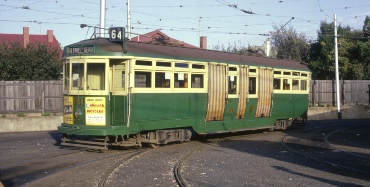
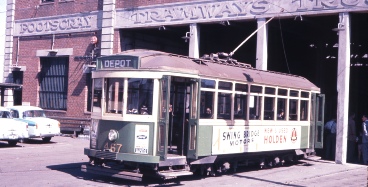
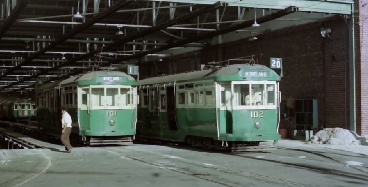
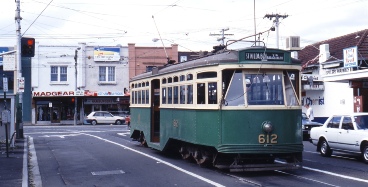
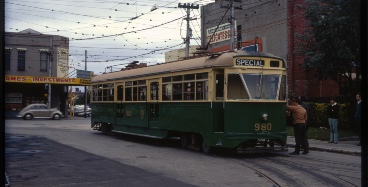
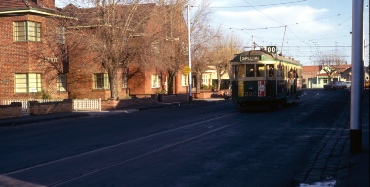
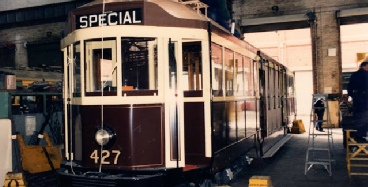
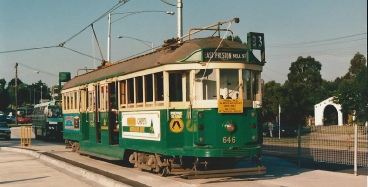
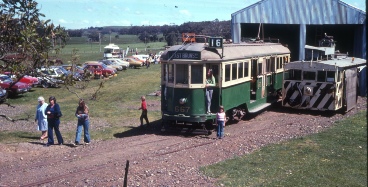
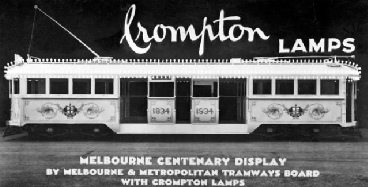
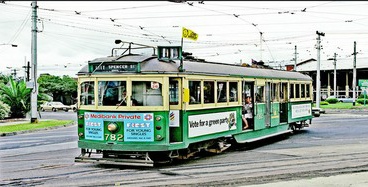
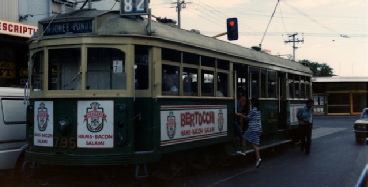
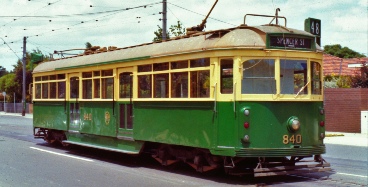
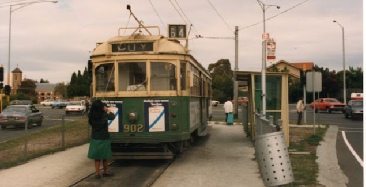
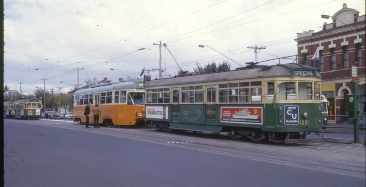

OUR COLLECTION

| Photography |
| Covid Safety |
| Our History |
| Our Funding |
| Rail Safety |
| Desktop Calendars |
| Working Bee |
| Membership |
| Painting our Buildings |
| Reflections |
| Previous Issues |
| Media |
| 2011 |
| 2010 |
| 2009 |
| 2007 |
| 2006 |
| 2005 |
| 2004 |
| 2003 |
| 2002 |
| 2001 |
| 2000 |
| 1999 |
| 1998 |
| 1997 |
| 1996 |
| 1995 |
| 1990 |
| 1989 |
| 1988 |
| 1987 |
| 1986 |